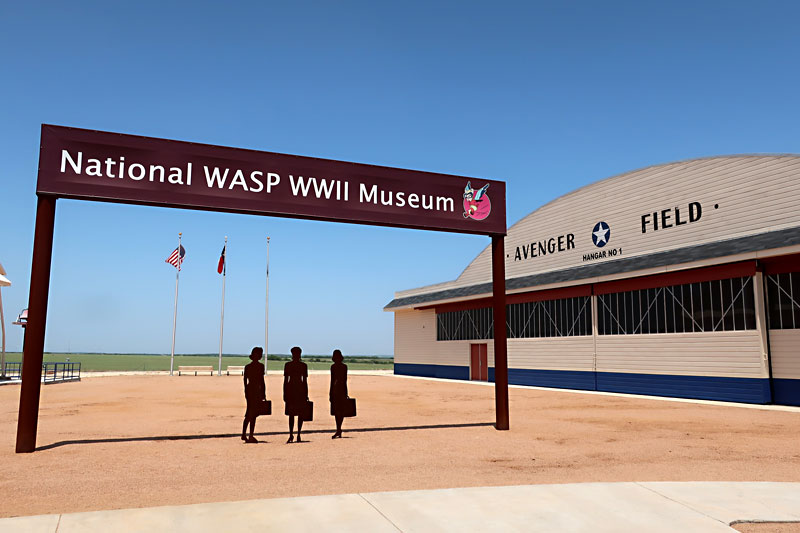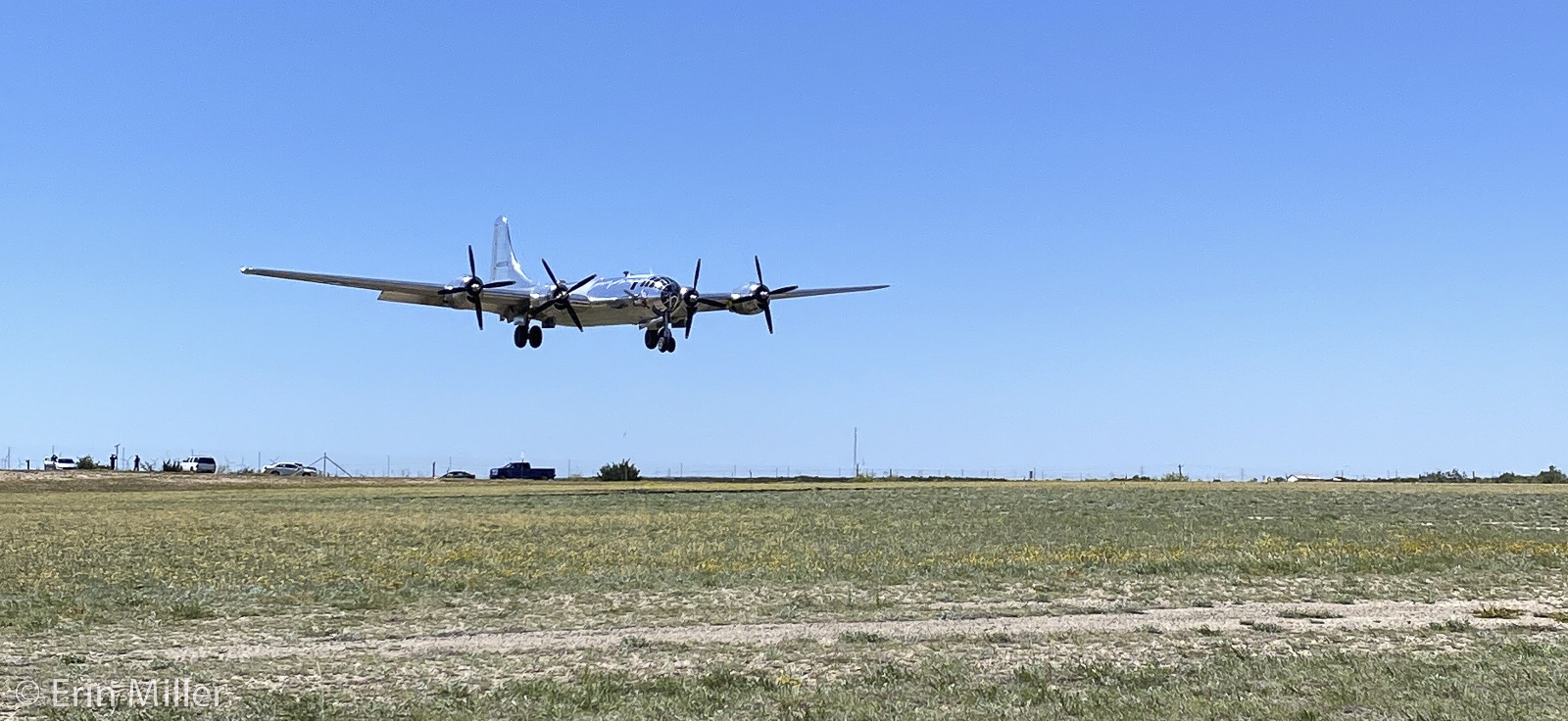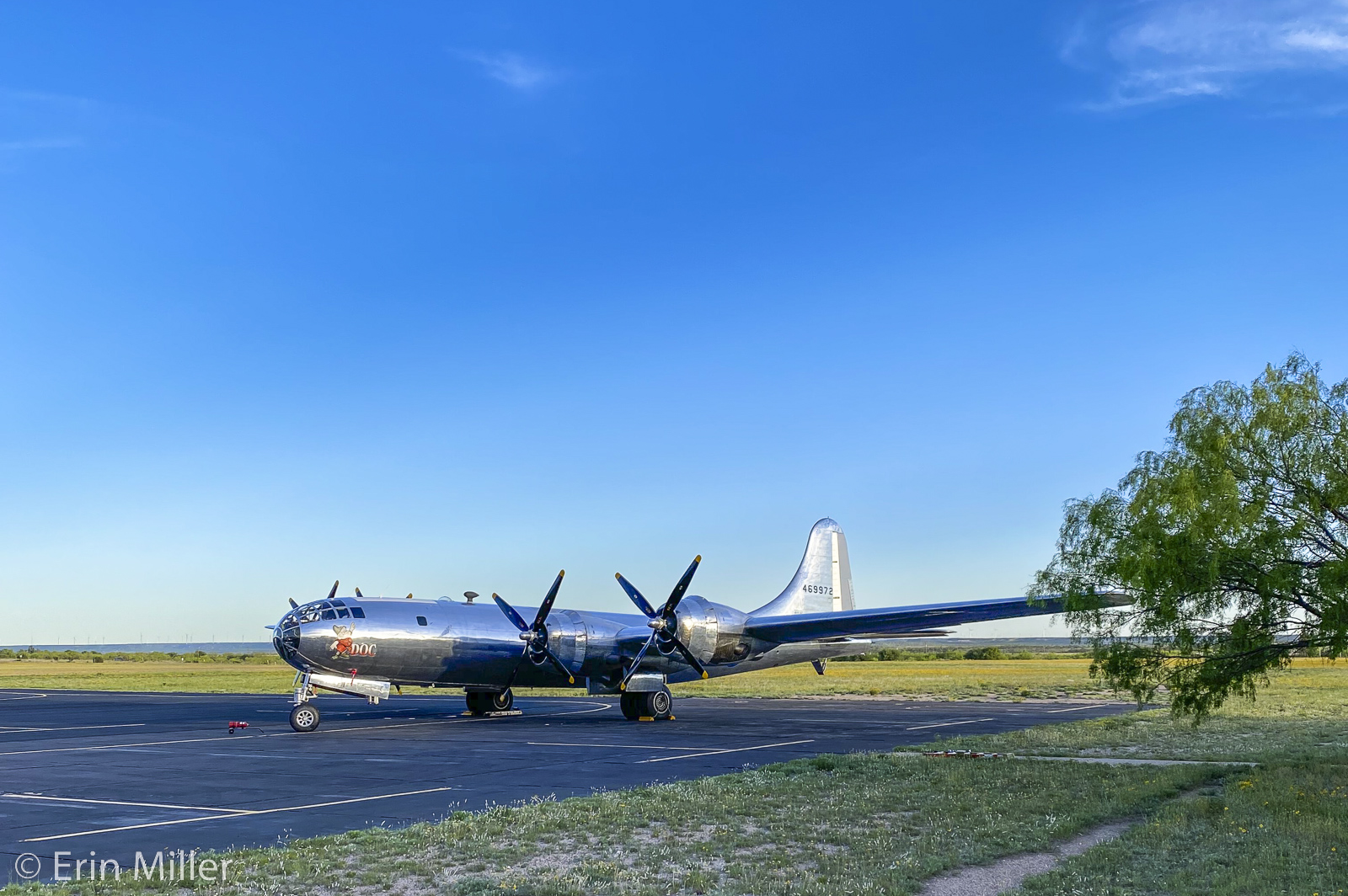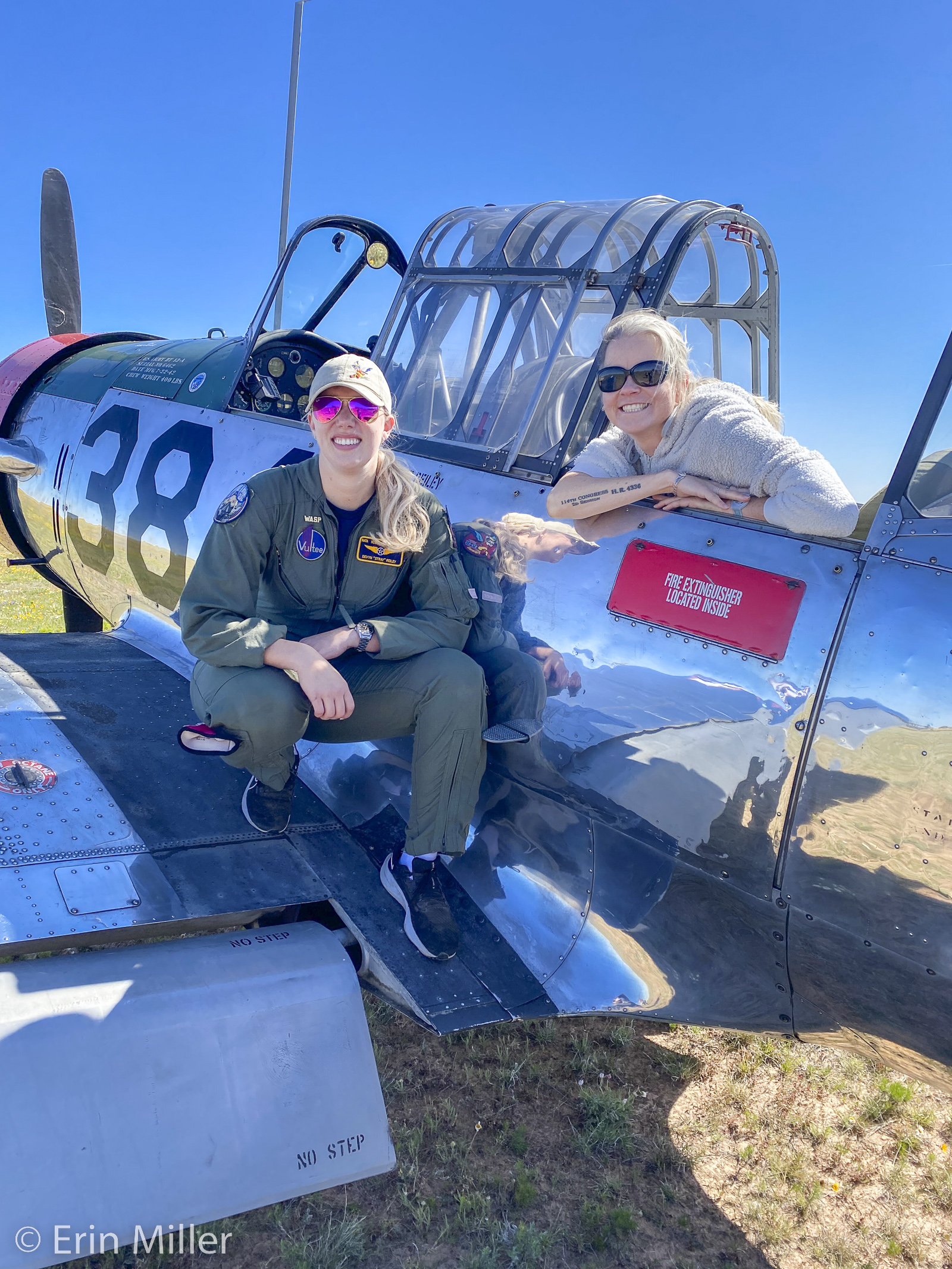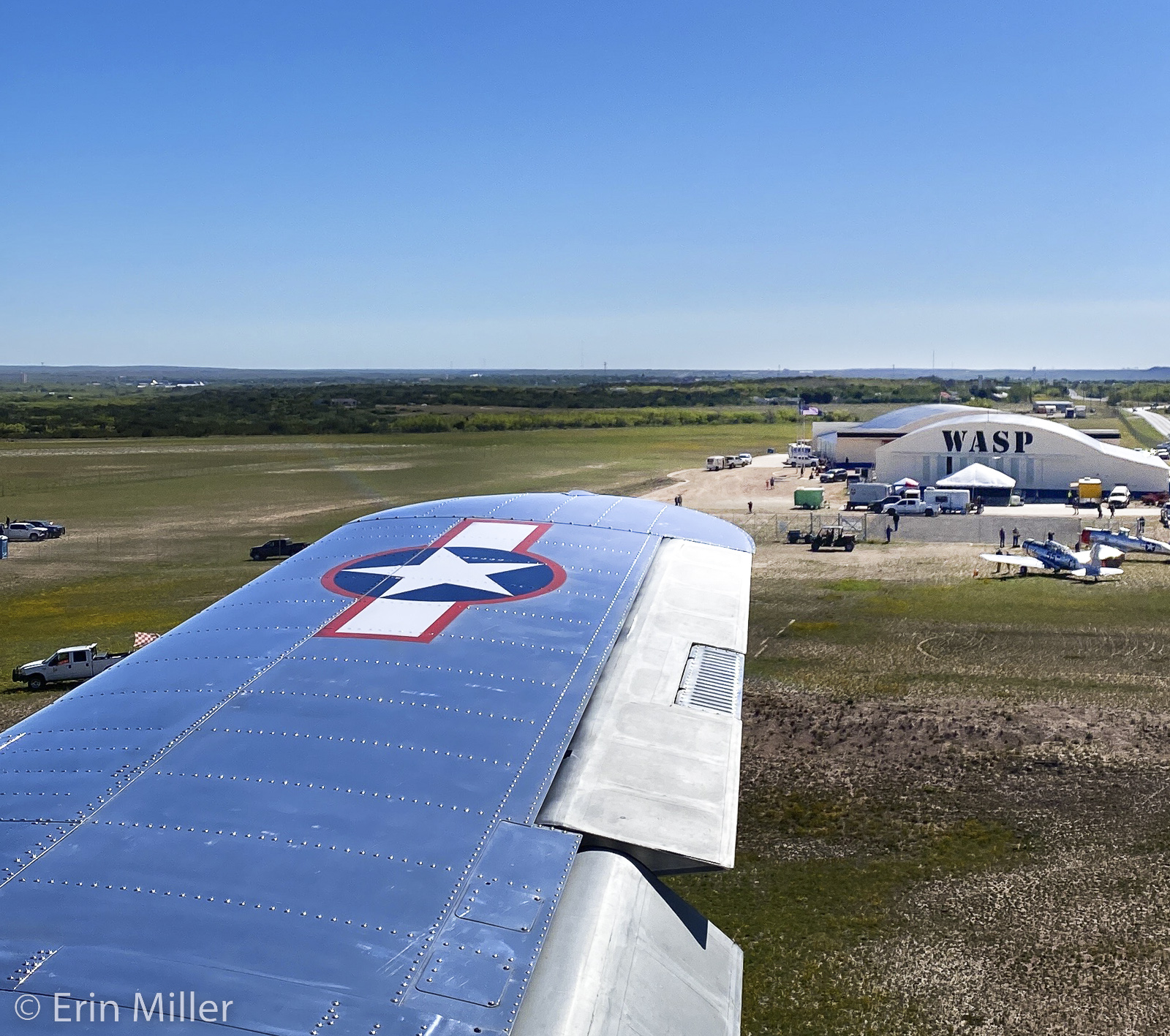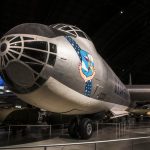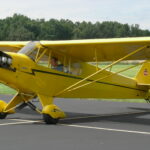by Erin Miller
“Oh wow!” a kid yelled as he sprinted against the gusting wind towards the runway at Avenger Field while staring up at a Boeing B-29 Superfortress on final approach in late April, 2023. The WWII bomber’s four, powerful radial engines drowned out the rest of the kid’s enthusiastic shouts as the B-29 passed by and touched down; Doc had arrived! Gusty conditions and blowing sand are not unusual to Sweetwater, Texas, where Avenger Field is located. Most of the Women Airforce Service Pilots (WASP) trained here during World War II. Having some of the historic warbirds flying at the field for the annual homecoming event of the National WASP WWII Museum makes one appreciate the sort of conditions those brave women, including my grandmother Elaine Danforth Harmon, learned to fly in. The weather was not ideal for this year’s event, but even so, there were excellent representatives of the WWII warbird era on hand, including Doc (one of just two airworthy B-29s in the world), B-25J Devil Dog, C-47 That’s All Brother, BT-13s, T-6s, Stinsons, and the only Curtiss SBC2-5 Helldiver presently flying in the world. Furthermore, the museum also announced their acquisition of a T-6 Texan to join its BT-13.
Of the 1,102 women who served as WASP, sadly only about a dozen are still with us, and these survivors were too frail to attend the annual gathering. So the WASP Museum’s Homecoming event is now championed by the descendants of this trailblazing group of female aviators, present-day pilots, and fans of WASP history, all of whom are committed to carrying on and teaching the WASP legacy. The museum has grown in recent years, and now includes a second building where WASP artifacts are displayed and archived; the new structure also houses exhibits to honor subsequent pilots who expanded the legacy established by the WASP.
The focus for this year’s fundraising dinner centered upon the 30th anniversary of the Department of Defense’s landmark decision formally allowing woman to fly in combat. This change also meant that women could fly both fighter and bomber aircraft types in combat alongside their male counterparts. Museum board member and retired USAF F-16 combat pilot and Thunderbird, Caroline “Blaze” Jensen, introduced Sharon “Betty” Preszler for the keynote speech and shared how her own U.S. Air Force was connected from the WASP through this interim group of women who flew combat missions. Dinner guests then watched alongside Betty and Major General Jeannie Leavitt as a video played which documented their flying careers, along with the story of retired Colonel Martha McSally. These three pilots stood at the press conference in 1993 when the Air Force announced its policy change; they went on to fly the F-16, F-15, and A-10 in combat – about 50 years after the WASP had first trained in Army planes.
Support for the WASP history came from across the aviation community and was evident throughout the weekend. The event featured a live charity auction to support the museum. The auction included a reveal for a new wrist watch which the Abingdon Company has created to honor the WASP legacy. Two of the donated watches made their “first flight” earlier that day in the Museum’s BT-13. The auction also included an exquisite, handmade propeller from Culver Props depicting the WASP mascot “Fifinella”. The aircrew from the visiting B-29 and B-25 bombers each donated a slot aboard a flight experience ride in their aircraft. Indeed everyone who attended the event in their warbirds and vintage planes happily chatted with visitors about aviation history. Event attendees could book rides aboard some of these visiting aircraft or have a tour aboard and learn about other historical types. The homecoming event also featured lectures and authors signings for books written about the WASP and other aviation-themed topics. A significant contingent of women who had become some of the first female pilots in the U.S. armed forces during the 1970s and 1980s came to honor the service of the WASP, some of them never having been to the museum before. The museum also held memorial services for two WASP, Susie Winston Bain and Jean Harman, whose ashes were spread across Avenger Field. Per Jean Harmon’s wishes, Jan Johnson, dispersed her mentor’s ashes, mingled with flower petals, from the rear of the AT-6 Texan.
I learned from my grandmother that her fellow aviators in the WASP program wanted formal recognition for their particular place in aviation and women’s history – not because they believed themselves more important than others, but because they knew that if history forgot those who broke barriers it would impose an additional burden on those who follow, making it harder for them to push the envelope further. Fortunately, young people are especially (and naturally) inspired by the story of the Women Airforce Service Pilots – the challenge is ensuring that they are exposed to it. The National WASP WWII Museum staff and volunteers are dedicated to preserving the WASP legacy and work throughout the year to plan this annual event. The Homecoming Weekend featured a ‘kids zone’ with STEM learning activities which, of course, included details about the WASP. As I gave a presentation about my book, Final Flight Final Fight, which chronicles the journey to honor my grandmother and the WASP at Arlington National Cemetery, one young girl sat in the front row with her copy of my children’s book, What Grandma Did, absorbing all of the information I discussed – despite the talk being targeted for adults. A few days later, her mother sent a video showing her daughter reading What Grandma Did aloud to her classmates. I can only imagine my grandmother’s happiness in knowing that young children are not only learning about her service, but they are also teaching their friends and even their teachers about this important time in history!
Because poor weather prevented her from flying to Avenger Field, my friend Allyssa (known to many by her social media handle as @FlyAllyssa), ended up driving the twelve-hour journey to Sweetwater to ensure she arrived in time for the festivities. “Being at WASP homecoming and being on the field where they trained gives me goosebumps just thinking about it. I’m thankful for the women who stepped out of line and did what others didn’t think possible,” she said. The National WASP WWII Museum is determined to preserve, promote and advocate for the important legacy that WASP personnel left the nation. The Homecoming Weekend plays an important part in that mission, both raising funds and public awareness, so be sure to keep an eye open for the announcement of their 2024 homecoming weekend and fly-in via their website waspmuseum.org and social media.







